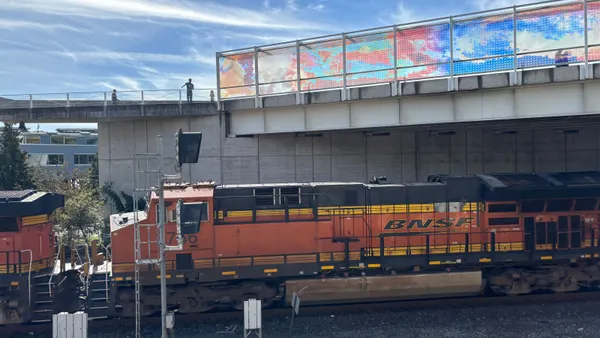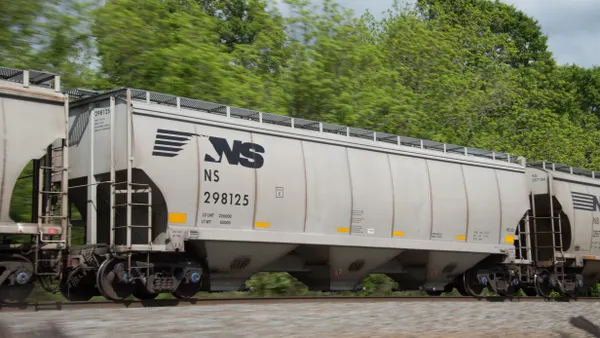Dive Brief:
- One day after reporting a "historic" operating ratio for the fourth quarter, CSX Executive Vice President of Sales and Marketing Mark Wallace issued an apology to shippers at the Midwest Association of Railroad Shippers winter meeting in Lombard, Illinois, for service changes and interruptions caused by the railroad's transition to precision scheduled railroading (PSR).
- "We are mindful of the fact that the sheer speed and intensity of the changes, unfortunately, caused some unintended collateral damage and disruption for shippers and other stakeholders and we apologize for that," he said.
- Wallace laid out the transition to PSR by the numbers, painting a dramatic picture of network and service changes. He said the railroad has reduced hump yards from 12 to five, reduced locomotive shops from 10 to five, and removed nearly 1,000 locomotives and 22,000 railcars form its network in order to drive greater efficiency and be on time for customers.
Dive Insight:
Wallace, who joined CSX in 2017 after 20 years split between Canadian National and Canadian Pacific serving under Hunter Harrison himself, told the crowd that compared to the transitions he witnessed at CN and CP, CSX's switch to PSR "might be well-described as scheduled railroading on steroids."
Despite his apology for service interruptions, he also took somewhat of a victory lap for the railroad, touting it's operating ratio and service improvements since implementing PSR.
"I think it is fair to say that we have gone from worst to first in just these past few months since we started our implementation of scheduled railroading," Wallace said. He added that by the end of 2017, train velocity was up 17%, dwell was down 13%, cars on the line decreased by 10% and miles increased 21%, all year-over-year.
"We are doing more with fewer assets and manpower while at the same time delivering improved service to our customers," said Wallace.
He said PSR, and the service improvements it has brought, has led his department of marketers and salespeople to "finally have a product to sell — how refreshing."
But whether PSR will resonate with customers is still an open question. Railroads that have partially or fully implemented the principles of scheduling cars individually and streamlining networks to gain more operational agility attest that the changes will benefit both the customers and the railroad. Skeptics believe the latter is the real goal, and shipper benefits remain to be seen.
Outgoing BNSF Chairman Matthew Rose was one such outspoken skeptic at the meeting.
Tony Hatch, president of ABH Consulting, said he saw the opportunities in PSR but acknowledged a painful period to achieve them, which many railroads and shippers have endured, may be inevitable.
"You achieve this new company … you have a period of inward focus and sometimes, such inward focus that you more than annoy all those other exterior stakeholders — which I’ve often questioned why you need to do that," Hatch said. "But afterward you emerge like a butterfly from the cocoon."
According to Wallace, CSX is emerging now with a new focus on customer service and, down the road, a larger view of what services railroads provide.
"We want to be an integral part of the entire supply chain. Why? Because we can deliver value there. As soon as a container or a boxcar leaves our property, we’re losing visibility to where it ultimately lands on our customer’s door. I think over time, we want to be a full supply chain enabler for our customer," Wallace mused. "We’re not there yet, but that’s kind of where I'm heading."














